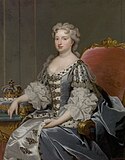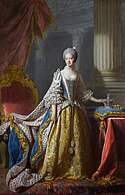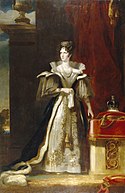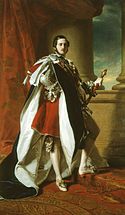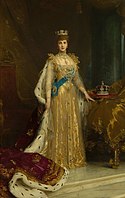
The monarchy of the United Kingdom, commonly referred to as the British monarchy, is the form of government used by the United Kingdom by which a hereditary monarch reigns as the head of state, with their powers regulated by the British Constitution. The term may also refer to the role of the royal family within the UK's broader political structure. The current monarch is King Charles III, who ascended the throne on 8 September 2022, upon the death of his mother, Queen Elizabeth II.

The House of Windsor is a British royal house, and currently the reigning house of the United Kingdom and the other Commonwealth realms. The royal house's name was inspired by the historic Windsor Castle estate. Since it was founded in 1917, there have been five British monarchs of the House of Windsor: George V, Edward VIII, George VI, Elizabeth II, and Charles III. The children and male-line descendants of Queen Elizabeth II and Prince Philip also genealogically belong to the House of Oldenburg since Philip was by birth a member of the Glücksburg branch of that house.
A prince consort is the husband of a monarch who is not a monarch in his own right. In recognition of his status, a prince consort may be given a formal title, such as prince. Most monarchies do not allow the husband of a queen regnant to be titled as a king because it is perceived as a higher title than queen, however, some monarchies use the title of king consort for the role.
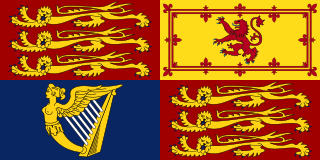
The royal standards of the United Kingdom presently refer to either of two similar flags used by King Charles III in his capacity as sovereign of the United Kingdom, the Crown dependencies, and the British Overseas Territories. Two versions of the flag exist, one for use within Scotland and the other for use elsewhere.
The style and title of the Canadian sovereign is the formal mode of address of the monarch of Canada. The form is based on those that were inherited from the United Kingdom and France, used in the colonies to refer to the reigning monarch in Europe. As various Canadian territories changed ownership and then the country gradually gained independence, the style and title of the monarchs changed almost as often as the kings and queens themselves. The mode of address currently employed is a combination of a style that originates in the early 17th century and a title established by Canadian law in 2024.

In the United Kingdom, the Accession Council is a ceremonial body which assembles in St James's Palace in London upon the death of a monarch to make formal proclamation of the accession of the successor to the throne. Under the terms of the Act of Settlement 1701, a new monarch succeeds automatically. The proclamation confirms by name the identity of the new monarch, expresses loyalty to the "lawful and rightful Liege Lord", and formally announces the new monarch's regnal name, while the monarch and others, in front of the council, sign and seal several documents concerning the accession. An Accession Council has confirmed every English monarch since James I in 1603.
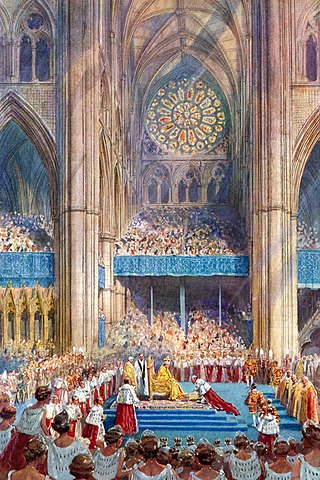
The coronation of the monarch of the United Kingdom is an initiation ceremony in which they are formally invested with regalia and crowned at Westminster Abbey. It corresponds to the coronations that formerly took place in other European monarchies, which have all abandoned coronations in favour of inauguration or enthronement ceremonies. A coronation is a symbolic formality and does not signify the official beginning of the monarch's reign; de jure and de facto their reign commences from the moment of the preceding monarch's death or abdication, maintaining legal continuity of the monarchy.
Royal Highness is a style used to address or refer to some members of royal families, usually princes or princesses. Kings and their female consorts, as well as queens regnant, are usually styled Majesty.

The monarchy of New Zealand is the constitutional system of government in which a hereditary monarch is the sovereign and head of state of New Zealand. The current monarch, King Charles III, acceded to the throne following the death of his mother, Queen Elizabeth II, on 8 September 2022 in the United Kingdom. The King's elder son, William, Prince of Wales, is the heir apparent.
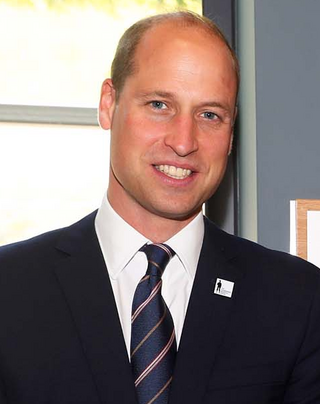
Prince of the United Kingdom of Great Britain and Northern Ireland is a royal title normally granted to sons and grandsons of reigning and past British monarchs, together with consorts of female monarchs. The title is granted by the reigning monarch, who is the fount of all honours, through the issuing of letters patent as an expression of the royal will.

Succession to the British throne is determined by descent, sex, legitimacy, and religion. Under common law, the Crown is inherited by a sovereign's children or by a childless sovereign's nearest collateral line. The Bill of Rights 1689 and the Act of Settlement 1701 restrict succession to the throne to the legitimate Protestant descendants of Sophia of Hanover who are in "communion with the Church of England". Spouses of Catholics were disqualified from 1689 until the law was amended in 2015. Protestant descendants of those excluded for being Roman Catholics are eligible.

A queen regnant is a female monarch, equivalent in rank, title and position to a king. She reigns suo jure over a realm known as a kingdom; as opposed to a queen consort, who is married to a reigning king; or a queen regent, who is the guardian of a child monarch and rules pro tempore in the child's stead or instead of her husband who is absent from the realm, be it de jure in sharing power or de facto in ruling alone. A queen regnant is sometimes called a woman king. A princess regnant is a female monarch who reigns suo jure over a principality; an empress regnant is a female monarch who reigns suo jure over an empire.
The Regency Acts are Acts of the Parliament of the United Kingdom passed at various times, to provide a regent in the event of the reigning monarch being incapacitated or a minor. Prior to 1937, Regency Acts were passed only when necessary to deal with a specific situation. In 1937, the Regency Act 1937 made general provision for a regent, and established the office of Counsellor of State, a number of whom would act on the monarch's behalf when the monarch was temporarily absent from the realm or experiencing an illness that did not amount to legal incapacity. This Act, as modified by the Regency Acts of 1943 and 1953, forms the main law relating to regency in the United Kingdom today.
Princess consort is an official title or an informal designation that is normally accorded to the wife of a sovereign prince. The title may be used for the wife of a king if the more usual designation of queen consort is not used.

The Danish royal family is the dynastic family of the monarch of Denmark. While some members of the Danish royal family hold the title of Prince(ss) of Denmark, descendants of Margrethe II additionally bear the title Count(ess) of Monpezat. Children of the monarch are accorded the style of His/Her Royal Highness. The King and Queen are styled Majesty.
Majesty is used as a manner of address by many monarchs, usually kings or queens. Where used, the style outranks the style of (Imperial/Royal) Highness, but is inferior to the style of Imperial Majesty. It has cognates in many other languages, especially of Europe.
A consort crown is a crown worn by the consort of a monarch for their coronation or on state occasions. Unlike with reigning monarchs, who may inherit one or more crowns for use, consorts sometimes had crowns made uniquely for them and which were worn by no other subsequent consorts.

The monarchy of The Bahamas is a system of government in which a hereditary monarch is the sovereign and head of state of the Commonwealth of The Bahamas. The current Bahamian monarch and head of state since 8 September 2022, is King Charles III. As sovereign, he is the personal embodiment of the Bahamian Crown. Although the person of the sovereign is equally shared with 14 other independent countries within the Commonwealth of Nations, each country's monarchy is separate and legally distinct. As a result, the current monarch is officially titled King of The Bahamas and, in this capacity, he and other members of the royal family undertake public and private functions domestically and abroad as representatives of the Bahamian state. However, the King is the only member of the Royal Family with any constitutional role.





